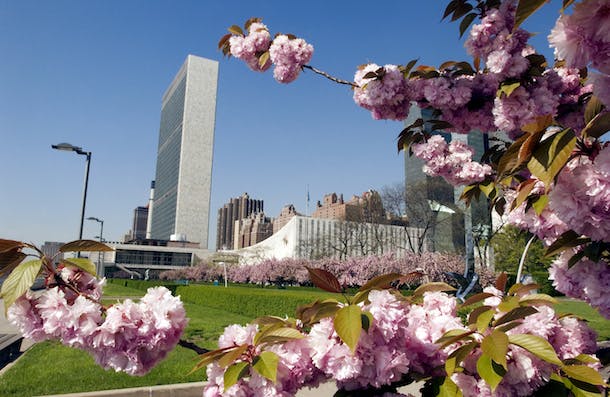An important milestone was reached this week, with agreement by the 193 Member States of the United Nations on how to make it better able to deliver on the Sustainable Development Goals (SDGs). What are the changes, what will they mean, and how do they fit into a broader plan for reform?
Secretary-General António Guterres came to office last year with an ambitious agenda for transforming the UN. In his very first speech to the General Assembly, he set out the case for why the UN needed to adapt and innovate in response to the pressing and interlinked development, peace and security, and humanitarian challenges facing the world. The adoption of the SDGs and the Paris Agreement on climate change in 2015, as well as global agreements on financing for development and sustaining peace, have also provided impetus and a clear vision for the future work of the UN.
The Secretary-General identified three changes to the way the UN works that would deliver the biggest impact: repositioning the UN development system, reconfiguring the parts of the UN working on peace and security, and modernizing management of the organization. Running as a current through the three reform areas, the Secretary-General also launched an ambitious timetable for reaching gender parity across the entire UN system. A year and a half later, the UN has already reached that milestone at leadership levels for the first time in history and is making rapid headway on the ground.
Repositioning the UN Development System
This week, another critical accomplishment took place, as Member States in the General Assembly reached agreement on a comprehensive package of reforms in the first of the priority areas – strengthening how the UN supports countries in meeting the SDGs. The global goals represent an ambitious set of common goals for a more prosperous and sustainable future. They rest on the clear recognition that poverty eradication cannot be tackled without strategies for addressing inequalities, spurring economic growth, promoting sustainability – including tackling climate change – and strengthening governance, prevention, and peace.
The scope of the SDGs means that the UN must transform how it works to deliver support to countries in partnership with government, civil society, business, philanthropy, and individuals. Last December, the Secretary-General set out ambitious proposals for how to do this. The report detailing his reforms noted: “The 2030 Agenda is our boldest framework for advancing the well-being of humankind. Its soaring ambition – to ensure peace and prosperity for all on a healthy planet – requires equally bold changes across the United Nations.” After extensive consultations, the 193 countries represented in the UN have now reached agreement on measures that will deliver a more efficient and coherent approach to how different parts of the UN support countries on achieving the SDGs.
Key Changes
An important part of achieving this new approach is through transforming the role of the resident coordinator – the senior-most UN official in the field. Resident coordinators are responsible for heading up the UN’s development work on the ground in individual countries, often also encompassing humanitarian and security responsibilities. But many of them currently have the almost impossible job of doing this on a part-time basis while at the same time heading up the work of the UN Development Programme (UNDP) in that country.
With the reforms, each country will have a dedicated resident coordinator and a separate dedicated head of UNDP. Separating out these roles will allow the new resident coordinator to focus 100% of her or his time on working with government officials and other stakeholders to make sure that UN agencies collectively can help countries deliver on their highest priorities to achieve the SDGs.
The new resident coordinator will lead cross-UN approaches to identify a country’s specific needs and then work out which UN entities are best placed to help meet those needs. What is needed in a small island developing country is very different than that of a large continental one, for example, and, in the future, UN teams will be better tailored to an individual country.
To create a joined-up approach, staff from different parts of the UN will also be physically brought together, with the UN setting an ambitious target of 50% of UN entities using common premises by 2021. Given that the UN can sometimes have up to 20 different agencies in a country, this should result in significant cost savings as well as more strategic focus.
Underpinning these reforms will be a stronger team in New York, with the resident coordinators reporting directly to leadership at the top of the UN – creating a direct accountability link between the UN in New York and leadership on the ground, where the vast majority of UN staff working on development issues are located.
Reaching Agreement
Reaching agreement on these reforms has already been an impressive feat. While Member States agreed on the principles of reforming how the UN supports development in an SDG era, there were many details to hammer out on how this would work in practice. One particular debate was around how to pay for the new and important resident coordinator positions. In the end, Member States reached a compromise whereby the costs would be shared between the budgets of the UN secretariat and the different funds, programs, and agencies involved, which are funded on a voluntary basis.
The successful completion of the negotiations on development reform demonstrates that despite the many differences between countries in the General Assembly, delivering the SDGs remains a common cause that 193 countries can get behind. Let’s hope this collaborative spirit and focus on reaching agreement and delivering results will prevail as the General Assembly takes up the other two strands – peace and security, and management reform. Negotiations on both strands have started and are expected to be concluded by the end of June.
As the Secretary-General said, “In the end, reform is about putting in place the mechanisms to make a real difference in the lives of people.”

